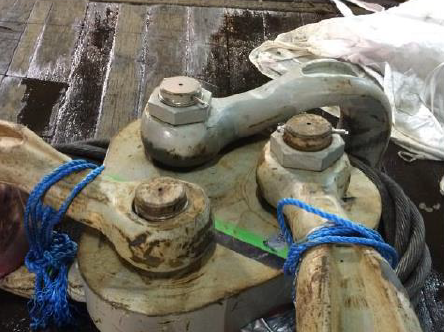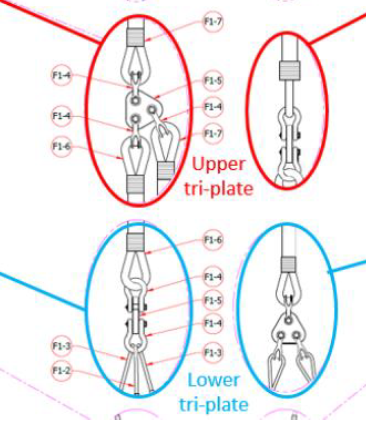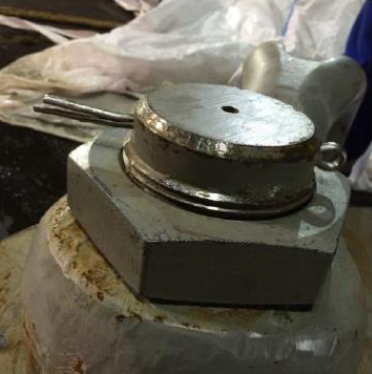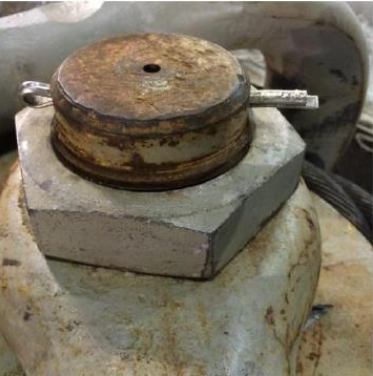Near-miss: Rigging recovered with missing nut from tri-plate shackle
A member has reported an incident in which rigging was recovered to deck with missing parts. The incident occurred when a rigging composed of two tri-plates was recovered to the vessel deck, and crew noticed that a nut was missing from one of the shackles. The installation rigging included two tri-plates, one in the lower section of the rigging arrangement just above the suction pile, and the second one on the upper end of the rigging arrangement connected to the crane’s auxiliary block. The shackle from which the nut was missing was one of the three installed in the upper tri-plate which was used to transfer the pile from the crane auxiliary block to the Abandonment & Recovery (A&R) winch when lowering the pile to the seabed.




Our member’s investigation noted the following:
- The cotter pin (split pin) was incorrectly installed (not opened out enough);
- There was no thorough visual inspection of tri-plate shackles by rigging crews (onshore or offshore);
- The tri-plate was secured on deck with shackles facing downward;
- The pre-sail-away checklist did not include checks of tri-plate shackles;
- The offshore rigging crew were unaware of observation following previous pile installation;
- There was a lack of training of onshore rigging team provided for barge mobilisation.
The following root causes were identified:
- Environment – rigging arrangement not allowing straightforward inspection of cotter pins;
- People – lack of communication between onshore/offshore and project/vessel teams. Onshore project team were aware of the prior observance of a similar hazard. A presentation was developed and meeting held on shore but no evidence could be found that it was ever shared with the teams on board the vessel;
- People – lack of attention/due care/poor work practice. Lack of pre-lift check of shackles by riggers, and failure to fully check rigging prior to barge sail-away;
- Organisation – failure to vet the onshore rigging team supplied by co-contractor’s subcontractor.
Our member took the following actions:
- Inspection of all rigging arrangements on the other piles;
- Reviewed pre-sail-away checklist and integrated into it all specific checks such as nuts and securing cotter pins;
- Updated the risk assessment and lift plan to reflect the hazards of missing/incorrectly installed pins in shackles;
- Onshore and offshore riggers to check thoroughly the presence of securing cotter pins after installation and before lifting operations;
- Project team to ensure that subcontractor’s rigging teams are properly vetted for competency prior to future barge mobilisations.
Members may wish to refer to the following incident (search words: missing, lifting):
Safety Event
Published: 27 June 2016
Download: IMCA SF 16/16
IMCA Safety Flashes
Submit a Report
IMCA Safety Flashes summarise key safety matters and incidents, allowing lessons to be more easily learnt for the benefit of all. The effectiveness of the IMCA Safety Flash system depends on Members sharing information and so avoiding repeat incidents. Please consider adding [email protected] to your internal distribution list for safety alerts or manually submitting information on incidents you consider may be relevant. All information is anonymised or sanitised, as appropriate.
IMCA’s store terms and conditions (https://www.imca-int.com/legal-notices/terms/) apply to all downloads from IMCA’s website, including this document.
IMCA makes every effort to ensure the accuracy and reliability of the data contained in the documents it publishes, but IMCA shall not be liable for any guidance and/or recommendation and/or statement herein contained. The information contained in this document does not fulfil or replace any individual’s or Member's legal, regulatory or other duties or obligations in respect of their operations. Individuals and Members remain solely responsible for the safe, lawful and proper conduct of their operations.
